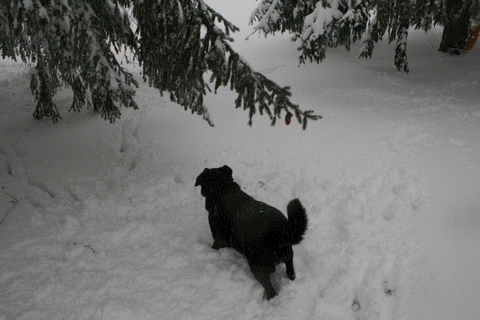
Jade loves spruce cones. (Animated .gif. Try reloading the page if you missed the action.)
Here’s my post for this month’s Garden Bloggers’ Design Workshop – Pets in the Garden, graciously hosted by Nan and the good folks at Gardening Gone Wild.
I’ve always been a dog person. In my adult life, I’ve had close relationships with three who have all taught me the prayer, “Lord, let me be half the man that my dog thinks I am.” All have been faithful companions and good company in the garden. But frankly, except for a few wattle fences made from Miscanthus floridulus stems to force them to run around instead of through a few beds, they haven’t really affected my garden design much. But they have kept me company in the yard and increased my garden satisfaction immensely.
We got our first dog — Tyler, a golden lab — soon after the birth of our first child, who learned to walk by pulling himself up on the poor pooch’s ears and other body parts. We lived in town for most of Tyler’s 16 years. He was the most destructive of the three garden-wise, digging up the lawn to get at the cool soil below when the weather was hot and pilfering snap peas off the vines he could reach from his overhead run. But those minor infractions were more endearing than damaging.
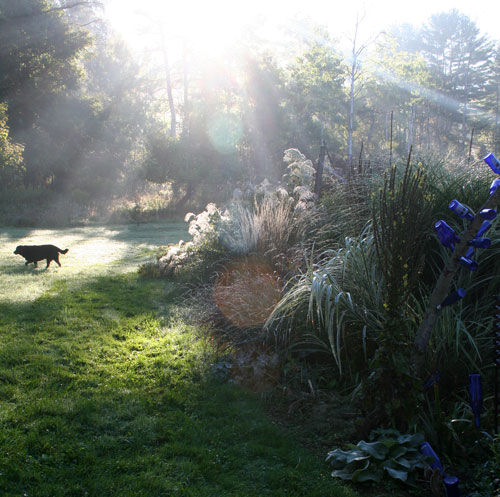
Jade in the morning sun.
Jade and Fred haven’t been much trouble in the garden, either. They have been fortunate enough to live most of their double-digit lives thus far within the acre or so of open land we have enclosed with invisislbe fence. They bark greetings to pedestrians and bicyclists, and chase the deer and rabbits out of their space within the fence, though the rabbits will sit just on the other side and laugh at them.
Jade is a great mix of border collie and lab. (That’s her in the banner at the top of the page.) But the border collie half makes her want to ‘work’ all the time. As visitor soon learn, anyone standing in the yard was obviously put there to throw the slimy Norway spruce cone she drops at their feet, and she will bark until you comply.
It used to be that I would have to put her back inside when trying to work in the garden. If I tried to ignore her, she would drop her cone in the hole I was digging or the bucket I was filling or directly in the path of the lawnmore and demand attention. But the grayer she gets, the less she demands. A few tosses and she’ll go lay in the grass and soak up the sun. One of my favorite garden shots is of her rolling in the August grass (snow, grass, or deer poo, rolling is second only to playing fetch with the cones as her outdoor pastime) with a double rainbow overhead.
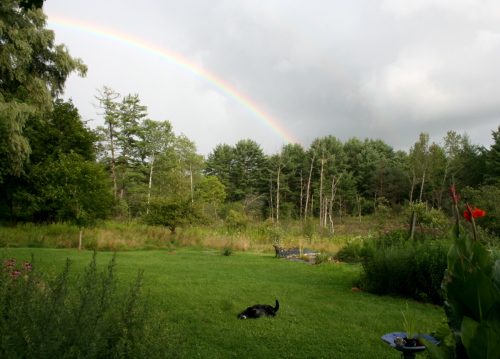
Jade rolling under the double rainbow.
Fred the Dalmatian is much lower maintenance when he’s outside. We call him cotton dog because his coat is short and he gets chilled easily. But when it’s warm and sunny he’ll snooze in the lawn. (That’s him in the right column.) Early in the season we have to limit his time else he sunburns. He does have a knack for getting in pictures, though. And everyone loves looking at Dalmatians.
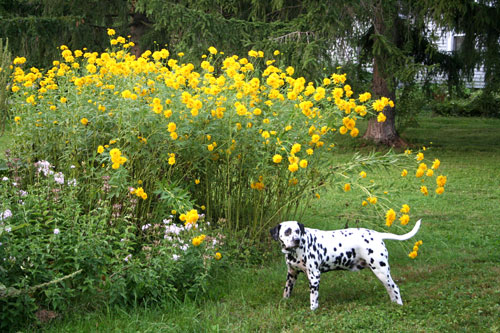
Fred inspecting outhouse plants.
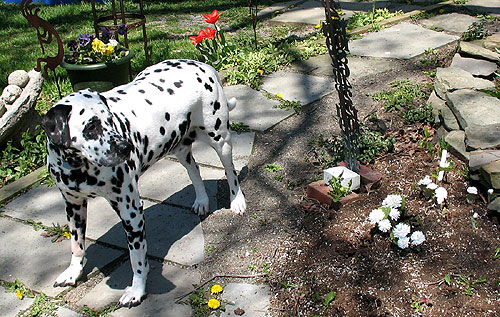
Fred echoing double bloodroots.
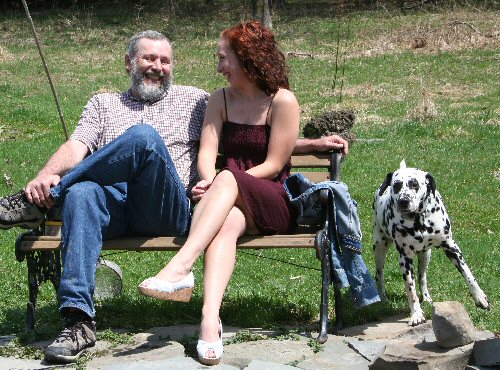
My friend Marcia’s favorite picture: Me and Corey (who brought both Fred and Jade into our lives) and Fred.
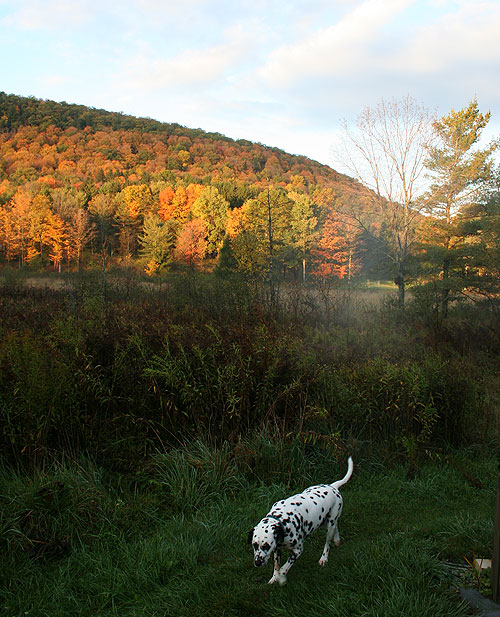
My favorite, Fred with the west ridge catching the morning sun.


